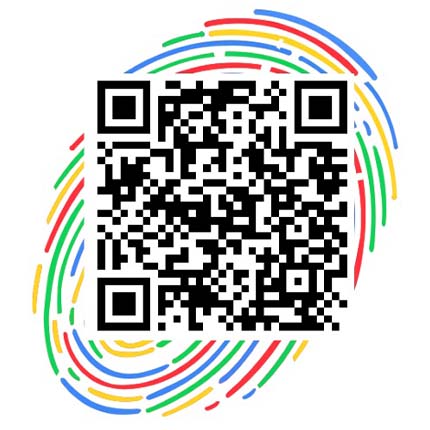Eurosystem and euro area
The euro area − or eurozone, as it is often called − is the monetary union of 19 Member States of the European Union (EU) that have adopted the euro as their single currency.
The euro area came into being when responsibility for monetary policy was transferred from the national central banks of 11 EU Member States to the ECB in January 1999.
Greece became the 12th member of the euro area on 1 January 2001. Since 1 January 2015, the euro area comprises the following 19 countries: Austria, Belgium, Cyprus, Estonia, Finland, France, Germany, Greece, Ireland, Italy, Latvia, Lithuania, Luxembourg, Malta, Netherlands, Portugal, Slovakia, Slovenia and Spain.
The creation of the euro area and the establishment of the European Central Bank was a milestone in the long and complex process of European integration.
https://www.bankofgreece.gr/en/the-bank/eurosystem-and-euro-area
Exchange rates
The Bank of Greece issues daily foreign exchange rates vis-à-vis the euro for use in its transactions with retail customers, banks and bureaux de change. Furthermore, it maintains an archive of historical rates vis-à-vis the Greek drachma in 1997-2000, as well as of the irrevocable euro conversion rates.
For foreign exchange rates that are not displayed here, please contact the Secretariat of the Financial Operations Department.
https://www.bankofgreece.gr/en/main-tasks/markets/exchange-rates
The euro is one of the most tangible signs of the common European identity, the EU Member States and their citizens.
Euro banknotes – “Europa” Series
After the first series of banknotes introduced in 2002, a new series of banknotes was created and was gradually introduced to circulation from 2013 onwards. The new series is named “Europa” because in several security features appears (watermark, hologram) the shape of Europe, the Greek mythology figure, after which our continent was named. This depiction comes from red-figure, bell-shaped vase, from the 2nd half of the 4th century B.C., which was originally found in Taranto of southern Italy (Paris, Louver museum).
Introduction of “Europa” series
The introduction of the second series of euro banknotes, called the “Europa” series, started with the €5 banknote in 2013, continued with the €10 banknote in 2014, the €20 banknote in 2015, the €50 banknote in 2017, and was completed in 2019 with the €100 and €200 banknotes.
The ECB has decided to stop producing the €500 banknote, although the first series €500 remains legal tender.
The banknotes of the two series will continue to circulate in parallel as legal tender. The date when the first series of euro banknotes ceases to be legal tender will be announced well in advance. However, the banknotes of the first series will always retain their value and they can be exchanged for an unlimited period of time at the Eurosystem National Central Banks.
The ECB website for the euro banknotes, with special emphasis on “Europa”series and its security features, provides additional information regarding the new banknotes and their security features, together with audiovisual material regarding their production process. This material can be used for publication, under the condition that the rules governing the reproduction of euro banknotes, will be strictly obeyed.
The design of the “Europa” series banknotes
The second series euro banknotes have the same basic color and theme per denomination as those of the first series “Ages and Styles of Europe”, with minor modifications in order to accommodate the enhanced security features and to make it easier to differentiate between the two series.
| Denomination | Color | Architectural style |
|---|---|---|
| €5 | Grey | Classical |
| €10 | Red | Romanesque |
| €20 | Blue | Gothic |
| €50 | Orange | Renaissance |
| €100 | Green | Baroque and rococo |
| €200 | Yellow-Brown | 19th century iron and glass architecture |
Moreover, the new design includes the consecutive enlargements of the EU from 2002 onwards.
The redesign of the euro banknotes was assigned to Reinhold Gerstetter, an independent banknote designer based in Berlin.
On the new banknotes appear:
- The symbol of the European Union (flag with 12 stars)
- The name of the currency in the Latin, Greek (EYPΩ) and Cyrillic alphabet,
- The revised map of Europe that includes Cyprus and Malta,
- The symbol © indicating copyright protection for ECB,
- The signature of the President of the ECB,
- The initials of the European Central Bank in nine linguistic variants for the new €5, €10 and €20 banknotes and in ten linguistic variants for the new €50, €100 and €200 banknotes:
| BCE: | French, Italian, Portuguese, Romanian, Spanish |
| ECB: | Czech, Danish, Dutch, English, Latvian, Lithuanian, Slovak, Slovenian, Swedish |
| ЕЦБ: | Bulgarian |
| EZB: | German |
| EKP: | Estonian, Finnish |
| ΕΚΤ: | Greek |
| ESB: | Croatian |
| EKB: | Hungarian |
| BĊE: | Maltese |
| EBC: | Polish |
Euro Coins
Euro coins, in contrast with euro banknotes that have single appearance, have only one side that is common for all member states of the euro area. The national side bares representations selected from the competent authorities of each member-state. Regardless of the representation on the national side, the euro coins can be used as legal tender in all euro area member states.
https://www.bankofgreece.gr/en/the-euro/euro-banknotes-and-coins






















